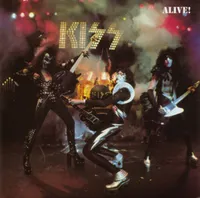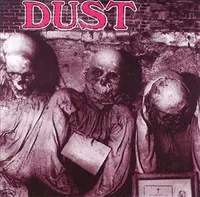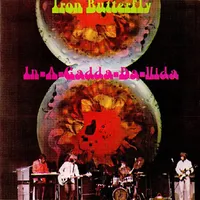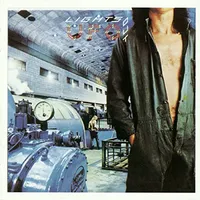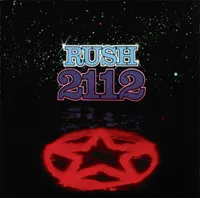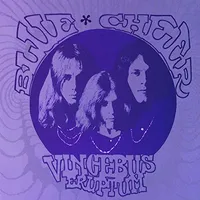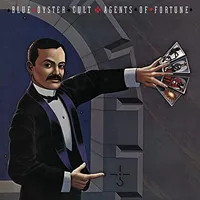The 30 albums that built heavy metal
The 30 albums that define heavy metal as we know it
20. Kiss - Alive! (Casablanca, 1976)
This is the album that rescued Kiss’s career – and also saved their label from going down the pan.
Despite the obvious attractions of the preceding studio album, Destroyer (1976), Kiss needed a record that truly captured their on-stage power. And Alive! delivered in spades. Bristling with gung-ho intensity and feral metal power, it puts you right at the heart of the storm.
It’s like having bassist Gene Simmons stomping around your living room. Did rock’n’roll ever sound so goddamn gigantic? Listen to the mighty Black Diamond or the epic 100,000 Years and the answer has to be: no.
19. Grand Funk Railroad - E-Pluribus Funk (Capitol, 1971)
Grand Funk Railroad had little media support during their glory days in the early 1970s, but their fans loved them. They even broke The Beatles’ attendance record at New York’s Shea Stadium in 1971, the year they released this somewhat surprising album.
Led by frontman Mark Farner, the Michigan mavericks hit out at political targets on both People, Let’s Stop The War and Save The Land, which was unusual for hard rock bands back then. In doing so they set an agenda that’s taken for granted in metal circles these days. And with Footstompin’ Music, Grand Funk proved that they still partied hard.
18. Dust - Dust (Kama Sutra, 1971)
At the time, this trio (which included young drummer Marc Bell, before he found fame as Marky Ramone) were regarded as one of the few American metal bands who could compete with the UK’s heavy hitters.
While their second album, 1972’s Hard Attack, gets more attention, it was on their self-titled debut that Dust really showed their craft. The combination of Bell, vocalist/guitarist Richie Wise and bassist Kenny Aaronson not only played with venom, but also developed some intricate progressive moments.
Dust are now regarded as one of America’s most important metal names. This album tells you why.
17. Mountain - Climbing! (Columbia, 1970)
There were none heavier than guitarist man-mountain guitarist Leslie West, whose love of Krispy Kreme donuts caused him to need his own helicopter when Mountain (commonly described as ‘the American Cream’) played their fourth ever gig, at 1969’s fabled Woodstock Festival.
The festival’s optimism was reflected in For Yasgur’s Farm, on Mountain’s debut release, Climbing!, released the following year. Its organic, hard-driving blues rock owed a significant debt to Cream, who were produced by Mountain bassist/vocalist Felix Pappalardi.
Ozzy Osbourne, Bachman-Turner Overdrive, Ted Nugent and more have all covered this record’s tubthumping hit Mississippi Queen.
16. Steppenwolf - Steppenwolf (ABC, 1968)
Thanks to the success of the movie Easy Rider in 1969, Steppenwolf are regarded as a cornerstone of alternative culture. The band’s Born To Be Wild and The Pusher were both featured on the film’s soundtrack, and they form the backbone to this debut album.
But it’s about more than just two songs. The level of performance and songwriting is high, and the band’s biker-style power is impressive. And let’s not forget that Born To Be Wild was the first song to use the term ‘heavy metal’ in the lyrics. In fact, it’s probably the first real metal track.
- The best bluetooth speakers you can buy right now
- Best headphones 2020: supercharge your music listening
- The best budget wireless headphones: wire-free and wallet-friendly
15. Iron Butterfly - In-A-Gadda-Da-Vida (Atlantic, 1968)
This was the first album ever to be certified platinum (for sales of a million copies) in America. These days its reputation is predicated on the sprawling title track, which takes up the whole of the second side of the vinyl version.
A cultural phenomenon that did much to introduce a wider audience to the wiles of metal, that track is far from the sole positive on an album where dysfunctional psychedelia meets a pumping garage sound – like listening to Led Zeppelin on the wrong drugs. My Mirage and Flowers And Beads are also effective. The dark side of hippy ideology.
14. UFO - Lights Out (Chrysalis, 1977)
As punk swept the globe, UFO kept the faith and came up with their most acclaimed album. The arrival in the line-up of rhythm guitarist/ keyboard player Paul Raymond seemed to inspire guitar hero Michael Schenker to greater heights.
And through songs like Too Hot To Handle, Love To Love and, of course, the title track itself, the band reached out to greatness. There was an almost telepathic link here between melody and brawn.
This is the record that set up a blueprint which was to influence many bands during the following decade. It was also UFO’s most successful album in America.
13. Rush - 2112 (Mercury, 1976)
The first album to feature the Rush’s now familiar ‘starman’ logo, designed by Hugh Syme, 2112 is widely considered to be Rush’s best album by fans.
Wrongly called a concept album – only half is conceptual – the seven part title track for which lyricist and drummer Neil Peart chose to use the work of libertarian author Ayn Rand prompted NME to brand them fascists.
The second half’s A Passage To Bangkok and Something For Nothing helped maintain the momentum. But for most fans 2112 will always be about the sensational performances of the sword & sorcery-inspired title track – all 20 minutes and 37 seconds of it.
12. Blue Cheer - Vincebus Eruptum (Philips, 1968)
As Black Sabbath began to pick up the pace in the UK, San Francisco’s Blue Cheer were offering an alternative view of heaviness.
This was based on a bad acid trip in a war zone. Which was appropriate, as legend has it that many US soldiers went into battle during the Vietnam war with this album blasting out. The trio’s distortion-obsessed cover of the Eddie Cochran hit Summertime Blues has become emblematic of the era, while Parchment Farm and Doctor Please were more doomy than even Sabbath.
This album is a highly charged, deranged masterpiece that still sounds remarkably contemporary.
11. Blue Oyster Cult - Agents Of Fortune (Columbia, 1976)
For most people this, Blue Öyster Cult’s fourth studio album is all about one song: (Don’t Fear) The Reaper. No, this wasn’t a pro-suicide song, as was widely thought at the time. But it has remained one of the most instantly recognisable tracks in the whole genre, and it continues to turn up in surprising places even today.
But there were other pointers on Agents Of Fortune – notably the excellent E.T.I. (Extra Terrestrial Intelligence), This Ain’t The Summer Of Love and The Revenge Of Vera Gemini (featuring Patti Smith on vocals) – to the enduring popularity of one of metal’s most delightfully odd outfits.
Sign up below to get the latest from Classic Rock, plus exclusive special offers, direct to your inbox!
Geoff Barton is a British journalist who founded the heavy metal magazine Kerrang! and was an editor of Sounds music magazine. He specialised in covering rock music and helped popularise the new wave of British heavy metal (NWOBHM) after using the term for the first time (after editor Alan Lewis coined it) in the May 1979 issue of Sounds.
